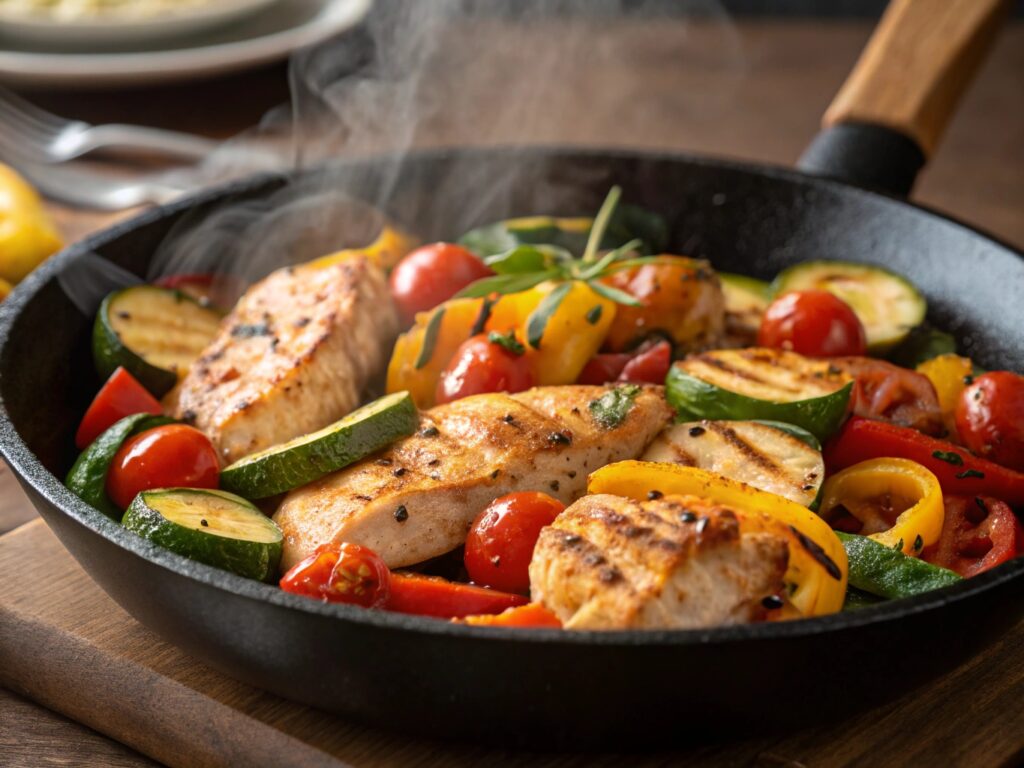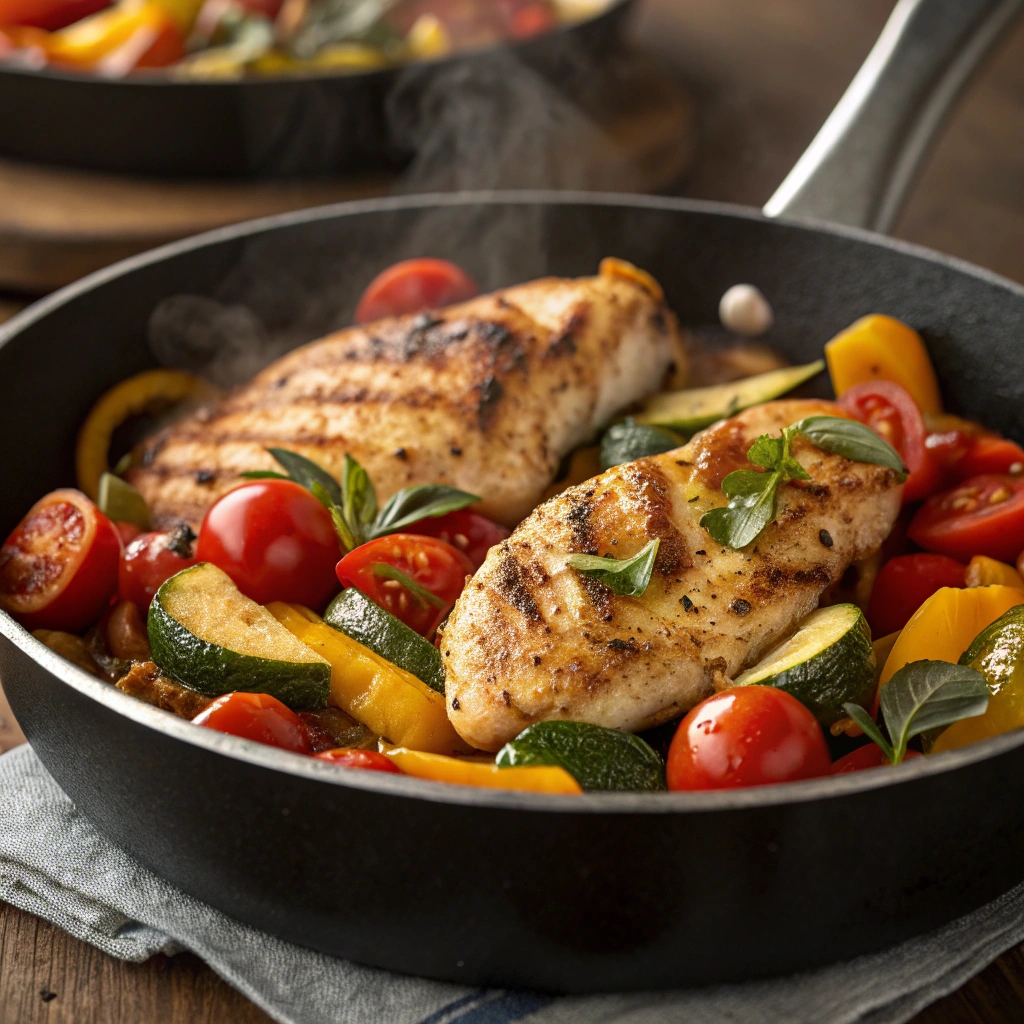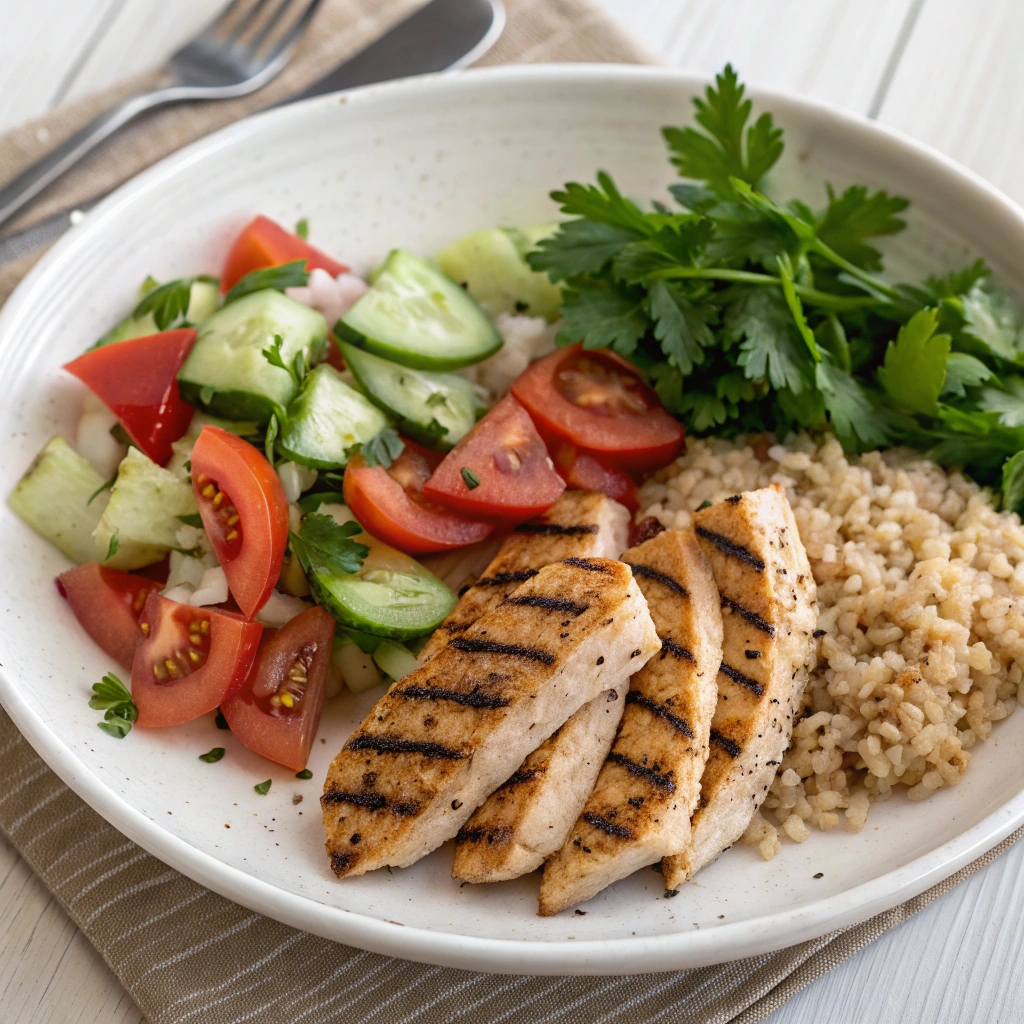Kidney-Friendly Meats are like the body’s hardworking janitors—they filter out toxins, balance electrolytes, and keep everything running smoothly. But when your kidneys aren’t functioning their best, every bite of food you eat can make a difference, especially when it comes to meat. So, what meat is easiest on the kidneys? Let’s dive deep into this.
Table of Contents
Understanding Kidney Health and Diet
The Role of Kidneys in the Body
Think of your kidneys as a pair of 24/7 detox machines. They filter about 50 gallons of blood daily, removing waste, balancing fluids, and regulating blood pressure. Sounds important, right? But here’s the catch—when these little organs are stressed (due to illness, dehydration, or poor diet), they can’t keep up.
“Your kidneys are your body’s silent heroes, often overlooked but always working tirelessly behind the scenes.”
Why Diet Matters for Kidney Function
Did you know that nearly 37 million adults in the U.S. suffer from chronic kidney disease (CKD)? Diet plays a crucial role here. Foods rich in certain minerals like sodium, potassium, and phosphorus can strain your kidneys, while high-protein diets increase their workload.
Proteins and Their Impact on Kidneys
How Proteins Are Processed by the Kidneys
When you consume protein, your body breaks it down into amino acids. While these are vital for muscle building and repair, the byproducts of protein metabolism—like urea—are filtered out by the kidneys. Too much protein means more work for your kidneys.
High-Protein Diets: Are They Risky for Kidneys?
You’ve probably heard the buzz about high-protein diets like keto or Atkins. While they might help with weight loss, they can also overload your kidneys, especially if they’re already compromised.
💡 Pro Tip: Stick to moderate protein intake unless directed otherwise by a doctor or dietitian.
What Makes Kidney-Friendly Meats ?
Nutritional Composition of Different Meats
Not all meats are created equal. Some are high in saturated fats, sodium, or phosphorus, which can burden your kidneys. The goal? Opt for lean, low-phosphorus options with minimal processing.
| Meat Type | Phosphorus (mg) | Sodium (mg) | Saturated Fat (g) |
|---|---|---|---|
| Chicken (3 oz) | 200 | 70 | 1.2 |
| Beef (3 oz) | 220 | 75 | 2.5 |
| Fish (Salmon) | 200 | 50 | 1.8 |
Choosing Lean Cuts vs. Fatty Cuts
Ever notice how chicken breast feels “lighter” than a ribeye steak? That’s because lean cuts like chicken breast or turkey are lower in fat and phosphorus, making them gentler on your kidneys.
“A small swap, like turkey instead of bacon, can go a long way in protecting your kidney health.”

Best Meats for Kidney Health
Chicken: The Versatile Option
Chicken is a top choice for a kidney-friendly diet. It’s low in fat, moderate in phosphorus, and easy to prepare in countless ways.
Recipe Idea: Try baked herb chicken with a side of roasted veggies. It’s delicious, kidney-friendly, and easy on the stomach.
Fish: High in Omega-3 and Low in Stress
Fish like salmon or tilapia isn’t just good for your heart; it’s also great for your kidneys. Rich in omega-3 fatty acids, fish reduces inflammation, which is crucial for overall kidney health.
“Think of fish as nature’s multi-vitamin for your kidneys.”
Turkey: A Lean and Balanced Choice
Turkey breast is another solid option. It’s lean, low in sodium, and packed with protein. Plus, it pairs well with almost any seasoning.
Meats to Avoid for Kidney Health
Processed Meats: Hidden Sodium and Additives
Processed meats like bacon, sausage, deli slices, and hot dogs are often packed with sodium and preservatives, which can wreak havoc on your kidneys. Sodium increases blood pressure, a leading cause of kidney damage, while phosphorus additives can harm those with kidney disease.
💡 Fun Fact: Some deli meats can have up to 400 mg of sodium per slice. That’s more than a bag of salty chips!
“Think of processed meats as a quick fix with long-term consequences—delicious but damaging to your kidneys.”
Red Meats: The Impact of Saturated Fats
While a juicy steak or a burger can be tempting, red meats like beef, lamb, and pork are high in saturated fats and phosphorus. Frequent consumption can lead to inflammation, which may strain your kidneys over time.
Pro Tip: Save red meats for special occasions, and when you do indulge, stick to lean cuts like sirloin or tenderloin.
Tips for Preparing Kidney-Friendly Meals
Cooking Methods That Preserve Nutrients
Cooking your food the right way can make all the difference. Grilling, baking, steaming, or roasting are great methods that retain nutrients without adding extra fats or sodium.
| Cooking Method | Pros | Cons |
|---|---|---|
| Grilling | Adds flavor without fat | Can char, creating toxins |
| Baking | Even cooking, easy to season | Takes longer |
| Steaming | Retains moisture and nutrients | Limited browning or texture |
| Sautéing | Quick and flavorful | Requires some oil or butter |
Flavoring Options Without Overloading Sodium
Who says kidney-friendly meals have to be bland? Season your meats with herbs, garlic, lemon juice, or salt-free spice blends. Avoid pre-made marinades and sauces that often contain hidden sodium.
“A sprinkle of rosemary or a dash of paprika can turn a simple chicken breast into a gourmet dish.”
Common Problems and Solutions for Meat Selection
Balancing Protein Intake with Kidney Function
Many people struggle with finding the right amount of protein. Eating too much can strain the kidneys, but eating too little may lead to malnutrition.
Solution: Work with a dietitian to calculate your daily protein needs based on your kidney function. Generally, about 0.6–0.8 grams of protein per kilogram of body weight is recommended for those with kidney disease.
Managing Sodium and Phosphorus Levels
Even if you’re choosing the right meats, excessive sodium or phosphorus can still be an issue. Phosphorus is found naturally in meat but is also added to many processed varieties.
Tip: Look for labels that say “phosphate-free” and rinse your meat to remove excess sodium from brining or preservatives.
Exploring Global Flavor Twists for Kidney-Friendly Meats
Eating healthy doesn’t have to mean sticking to bland or repetitive meals. By incorporating global flavors, you can turn simple, kidney-friendly meats into culinary adventures. Let’s look at some creative, kidney-friendly ideas inspired by world cuisines.
Mediterranean-Inspired Grilled Chicken
The Mediterranean diet is renowned for its health benefits, and it’s naturally kidney-friendly. Marinate lean chicken breast with olive oil, garlic, lemon juice, and oregano. Pair it with a side of roasted vegetables or a cucumber-dill salad.
“Think of it as a mini-vacation to Greece for your taste buds!”
Asian-Style Steamed Fish
Asian cuisines are masters of steaming techniques, which are perfect for kidney health. Steam fish like tilapia or cod with ginger, garlic, and soy sauce (use a low-sodium option). Garnish with fresh scallions and sesame seeds.
Tip: Serve with a side of plain jasmine rice to balance the meal.
Latin American Turkey Tacos
Craving something with a little spice? Use ground turkey as a lean, kidney-friendly meat alternative for tacos. Season with chili powder, cumin, and paprika (skip the salt), and serve on small corn tortillas with fresh salsa and avocado.
💡 Fun Idea: Swap traditional cheese toppings for a dollop of Greek yogurt to keep it lighter and kidney-conscious.
Serving Ideas for Kidney-Friendly Meats
Presentation can make all the difference when sticking to a specialized diet. Here are a few ideas to make kidney-friendly meals visually appealing and satisfying:
- Build Your Plate: Use the “plate method”—half vegetables, one-quarter lean protein (like chicken or fish), and one-quarter whole grains.
- Bento Box Style: Arrange small portions of different foods (e.g., grilled chicken, steamed veggies, and fruit) in a visually pleasing way.
- Bowls for the Win: Create a “power bowl” with rice, lean turkey, and kidney-friendly toppings like roasted zucchini and a lemon vinaigrette.
Pro Tip: Colorful meals aren’t just Instagram-worthy—they’re often more nutritious too!
Cooking Techniques for Preserving Kidney Health

Cooking techniques play a significant role in maintaining the nutritional value of kidney-friendly meats. Let’s break down the best approaches:
Baking
Baking is one of the simplest and healthiest ways to cook meat. Place chicken or turkey on a sheet pan with your favorite vegetables, drizzle with olive oil, and bake at 375°F for 20–30 minutes.
Why it’s great: Minimal oil, no added sodium, and locks in natural juices.
Grilling
Grilling adds flavor without extra fat. For kidney health, avoid heavy marinades and focus on dry rubs with herbs and spices.
Pro Tip: Line the grill with foil to prevent harmful char that can form at high temperatures.
Slow Cooking
Use a slow cooker to create tender, flavorful dishes with minimal effort. Combine chicken thighs, garlic, and low-sodium broth for a hearty stew.
Common Myths About Meat and Kidney Health
Let’s debunk a few misconceptions about meat and its impact on kidney health:
Myth 1: All Protein is Bad for Kidneys
Truth: It’s not about cutting out protein completely; it’s about finding the right balance. Lean, high-quality protein sources are essential for overall health, even with kidney concerns.
Myth 2: Red Meat is Always Off-Limits
Truth: Red meat can be included occasionally in small portions, especially when choosing lean cuts like tenderloin. Moderation is key.
Myth 3: Plant-Based Proteins Are Always Better
Truth: While plant-based proteins are excellent, animal proteins like chicken, turkey, and fish can also be kidney-friendly when chosen and prepared wisely.
Batch Cooking and Meal Prep for Kidney-Friendly Meats Eating
Planning meals in advance can make sticking to a kidney-friendly diet much easier. Here’s how to get started:
Step 1: Choose Lean Proteins
Focus on kidney-friendly options like chicken, turkey, and fish. Purchase in bulk to save money.
Step 2: Cook in Large Batches
Prepare large portions of grilled chicken breasts or baked turkey slices and store them in individual containers for the week.
Step 3: Portion Control
Use a food scale to portion out your meals. Aim for 3–4 ounces of protein per serving to avoid overloading your kidneys.
Step 4: Freeze for Later
Batch-cooked meals can be frozen for up to three months. Label each container with the date and contents for easy organization.

More Ideas for Kidney-Friendly Meals
Exploring kidney-friendly meal ideas doesn’t have to be dull or limiting. With a little creativity, you can enjoy flavorful, nutritious dishes that are gentle on your kidneys. Here’s a list of practical ideas and recipes to elevate your kidney-conscious cooking game.
Global-Inspired Kidney-Friendly Recipes
- One-Skillet Chicken and Veggies: Keep it simple with a single skillet dish using lean chicken breast, zucchini, and bell peppers. Season with a dash of paprika and fresh herbs like rosemary. Check out more one-pan ideas in Chicken Meets Pasta: How to Nail One Pan.
- Mediterranean Salmon Bowls: Roast salmon with garlic, lemon, and olive oil, then serve it over a bed of couscous. Toss in cucumber, tomatoes, and a sprinkle of parsley for a refreshing, balanced meal.
- Asian-Inspired Stir-Fry: Use thinly sliced turkey breast or ground chicken with low-sodium soy sauce, ginger, and a touch of sesame oil. Pair this dish with steamed rice or rice noodles for a complete dinner. For ground chicken tips, check out How Do You Cook Ground Chicken?.
Creative Twists for Classic Dishes
- Kidney-Friendly Meatloaf: Swap traditional beef with lean ground chicken or turkey. Add finely diced carrots and celery for extra moisture without using too much salt. A fantastic recipe for this can be found in Kidney-Friendly Ground Beef Meatloaf Recipe.
- Chicken Bacon Ranch Salad: Toss grilled chicken and low-sodium turkey bacon with a medley of spinach and romaine. Use a kidney-friendly ranch dressing to keep it creamy without the added sodium, as seen in Chicken Bacon Ranch Pasta Salad.
- Low-Sodium Rotisserie Chicken Pasta: Shred leftover rotisserie chicken and mix it into a pasta dish with low-sodium broth, olive oil, and fresh parsley. Find inspiration in Secrets to Making the Best Rotisserie Chicken Pasta.
Plant-Based and Meat-Alternative Ideas
- Chickpea and Spinach Patties: Blend chickpeas with spinach, garlic, and a hint of lemon to form patties. Pan-sear them lightly for a kidney-friendly protein alternative.
- Eggplant and Chicken Fusion: Combine lightly seasoned chicken strips with roasted eggplant for a flavorful, Mediterranean-inspired pairing. Check out more eggplant ideas in Why Do You Soak Eggplant in Water Before Cooking?.
- Quinoa-Stuffed Bell Peppers: Use a mix of cooked quinoa, diced turkey, and chopped vegetables. Bake until the peppers are soft for a filling and healthy option.
Quick Fixes for Leftovers
- Leftover Chicken Wraps: Shred leftover grilled or baked chicken, then layer it with lettuce, tomatoes, and a drizzle of Greek yogurt in a whole-grain tortilla. For more leftover-saving tips, read Quick Fixes for Dry Leftover Chicken.
- Breakfast Scramble: Combine diced turkey bacon, spinach, and egg whites for a quick and kidney-friendly breakfast option. A great tip is shared in Microwaving Frozen Breakfast Sandwiches.
Flavorful Seasoning Hacks
- Homemade Salt-Free Spice Blends: Create your own spice mix with garlic powder, onion powder, paprika, and dried herbs like thyme and oregano. Avoiding store-bought blends ensures you control sodium intake. Learn more about kidney-safe seasoning in What Seasoning is Kidney-Friendly?.
- Herb-Based Sauces: Blend parsley, cilantro, garlic, and olive oil into a chimichurri sauce to drizzle over grilled meats. It’s a vibrant way to add flavor without sodium or processed additives.
Final Thoughts: Your Journey to Kidney-Friendly Eating
Eating for kidney health doesn’t mean giving up the foods you love—it’s about making smart swaps and learning to prepare meals in a way that supports your health. With options like grilled chicken, steamed fish, and flavorful global twists, your meals can remain exciting and satisfying.
Remember, your kidneys are your lifelong partners in health. Treat them well with thoughtful choices and balanced portions.
“Healthy eating is not a restriction; it’s a celebration of all the foods that nourish your body.”
